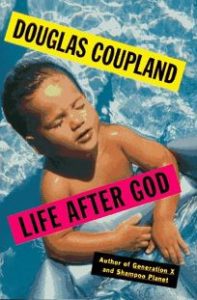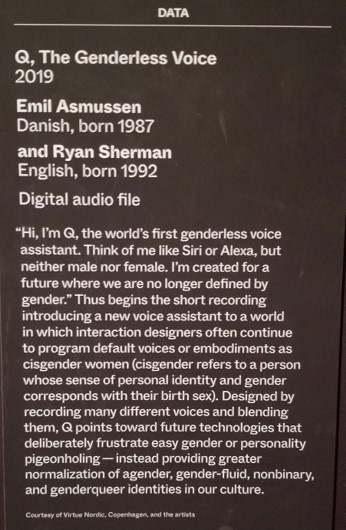
Now – here is my secret: I tell it to you with an openness of heart that I doubt I shall ever achieve again, so I pray that you are in a quiet room as you hear these words. My secret is that I need God – that I am sick and can no longer make it alone. I need God to help me give, because I no longer seem to be capable of giving; to help me be kind, as I no longer seem capable of kindness; to help me love, as I seem beyond being able to love.
These words of Coupland came to mind this morning as I pondered yesterday’s trip to the Philadelphia Museum of Art (yes, think Rocky and those iconic steps) and a walk through a current exhibition, “Designs for Different Futures.” The museum describes the exhibit this way: “Whether it’s apocalyptic, utopian, or still up for grabs, the future is a perennial source of inspiration for designers. Join us as we explore visionary and sometimes controversial designs that promise to transform how we live, eat, heal, travel, and even love, in any number of possible futures. From lab-grown food and robotic companions to citizenship exchange, discover imaginative ideas that respond to human civilization’s future needs, desires, and fears.”
As I walked through the exhibit, I was met with an overload of visual displays that function (as we always say here at CPYU) as both maps and mirrors of the heart and soul of contemporary culture. Art that functions as a map tells us what to believe and how to live. Art also functions as a mirror, reflecting back to us the heart and soul of the artist. . . including everything from yearnings to convictions.
In his 1970 book Modern Art And The Death Of A Culture, Christian thinker Hans Rookmaaker described the power of art to speak. He wrote, “This art is the work of your neighbors, your contemporaries, human beings who are crying out in despair for the loss of their humanity, their values, their lost absolutes, groping in the dark for answers. It is already late, if not too late, but if we want to help our generation we must hear their cry. We must listen to them as they cry out from their prison, the prison of a universe which is aimless, meaningless, and absurd.”
Perhaps nothing in the exhibit hit me harder than the first map and mirror we encountered as we entered the exhibit. There on a black wall was a simple sign that introduced us to the voice behind the sound we were hearing. There was nothing visible to this artifact. No painting. No object. Nothing. Only the sign. Here it is. . .
Reading that sign as I listened to the voice void of true humanity was like a punch in the gut. It is “a design for a different future.” It is a design that breaks with the past. It is a design that obliterates God’s design. It is a design created by a bearer of the divine image who is imaging the Creator through the ability to create. . . but is using that creativity to rebel against the Creator. It is a design that is a human design rooted in an implicit belief that human design should replace God’s design. It’s the same lie that our first parents believed. They thought that self-governance would move them into a freedom where things would be so much better. We know. . . because of what we read and what we experience in our lives that what results is an imprisonment to something much, much worse. And so we continue. . . all of us. . . artists and non-artists alike, to believe the same lies. . . locking ourselves up when we think we are doing the exact opposite.
Douglas Coupland’s narrator came to the end of himself. . . and we must do the same.
When you think about it, isn’t it absolutely amazing that the Creator we rejected and continued to reject came into the world to make things right?!?

Thank you, Walt, for this reflection.